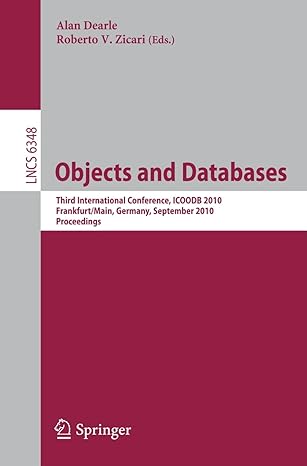Question
need help finishing my c code Write C programs named matrix.h and matrix.c containing the headers and implementations of following functions. void magic_square(int *m, int
need help finishing my c code
Write C programs named matrix.h and matrix.c containing the headers and implementations of following functions.
- void magic_square(int *m, int n) generates an n by n magic square and stores it in 2-D array passed by pinter m (only n=3 is required).
- void display_matrix(int *m, n) displays n by n matrix m in 2-D style.
- int is_magic_square(int *m, int n) checks if the given matrix m is a magic square, returns 1 if true otherwise 0.
- void transpose_matrix(int *m1, int *m2, int n) transposes the n by n matrix m1 and saves the resulted matrix in m2.
- void multiply_matrix(int *m1, int* m2, int *m3 int n) computes the matrix multiplication m1*m2 and saves the resulted matrix in m3.
Use the provided main program to test the above functions:
#include "matrix.h"
int main() {
int n = 3;
int m1[n][n];
int m2[n][n];
int m3[n][n];
int *p1 = &m1[0][0];
magic_square(p1, n);
printf(" m1:");
display_matrix(p1, n);
printf("is_magic_square:%d ", is_magic_square(p1, n));
int *p2 = &m2[0][0];
printf(" m1':");
transpose_matrix(p1, p2, n);
display_matrix(p2, n);
printf("is_magic_square:%d ", is_magic_square(p2, n));
int *p3 = &m3[0][0];
multiply_matrix(p1, p2, p3, n);
printf(" m1*m1':");
display_matrix(p3, n);
printf("is_magic_square:%d ", is_magic_square(p3, n));
return 0;
}
matrix.h
#include
#include
void magic_square(int *m, int n);
int is_magic_square(int *m, int n);
void display_matrix(int *m, int n);
void transpose_matrix(int *m1, int *m2, int n);
void multiply_matrix(int *m1, int *m2, int *m3, int n);
matrix.c
//---------------------------------------------------------
void magic_square(int *m, int n) {
/* assign 3X3 matrix to following values
8 1 6
3 5 7
4 9 2
*/
int values[9] = { 8, 1, 6, 3, 5, 7, 4, 9, 2 };
int i, len = n*n, *p = values;
for (i = 0; i < len; i++) *m++ = *p++;
}
//---------------------------------------------------------
void display_matrix(int *m, int n) {
int *p = m, i, j;
for (i = 0; i < n; i++) {
printf(" ");
for (j = 0; j < n; j++) printf("%4d", *p++);
}
printf(" ");
}
//---------------------------------------------------------
int is_magic_square(int *m, int n) {
// your implementation
int i, j, rowsum, sum, offset, *p;
int rowsum = n*(n * n = 1)/2;
int checks = 2 * n+2;
for(j = 0; j < checks; j++){
if(j < n){
p = m + j*n;
offset = 1;
}
else if(j < 2*n){
//check columns, set p and offset for each column
}
else if(j == 2*n){
//check positive diagonal, set p and offset
}
else{
//negative diagonal, set p and offset
}
sum = 0;
for( i = 0; i < n; i ++){
sum += *p;
p += offset;
}
if(sum != rowsum)
return 0;
}
// check n*n numbers, within range, and no two are same
return 1;
}
//---------------------------------------------------------
void transpose_matrix(int *m1, int *m2, int n) {
// your implementation
int i, j;
for(i = 0; i < n; i++)
for(j = 0; j < n; j++)
*m2[j][i] = *m1[i][j];
}
//---------------------------------------------------------
void multiply_matrix(int *m1, int *m2, int *m3, int n) {
// your implementation
int i, j, k, sum;
for(i = 0; i < n; i++){
for(j = 0; j < 4; j++){
sum = 0;
for(k = 0; k < n; k++){
//your implementation
}
*(m3 + i*n + j) = sum;
}
}
}
the output should be the following:
m1: 8 1 6 3 5 7 4 9 2 is_magic_square:1 m1': 8 3 4 1 5 9 6 7 2 is_magic_square:1 m1*m1': 101 71 53 71 83 71 53 71 101 is_magic_square:0
Step by Step Solution
There are 3 Steps involved in it
Step: 1

Get Instant Access to Expert-Tailored Solutions
See step-by-step solutions with expert insights and AI powered tools for academic success
Step: 2

Step: 3

Ace Your Homework with AI
Get the answers you need in no time with our AI-driven, step-by-step assistance
Get Started


